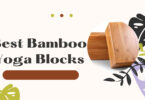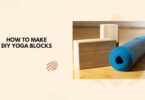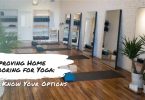There are several factors to consider when selecting a yoga mat for your practice. You should never make an impulse purchase.
In order not to make the wrong decision when buying your yoga mat, especially if it is your first yoga mat, then this article is ideal for you. According to my many years of experience, first as a practitioner and then as a yoga teacher, I had the opportunity to try different yoga mats. That gave me a better understanding of the yoga mat selection process, both for myself and for my practitioners who need guidance when purchasing them.
Deeper Insight
When deciding like this, the first thing to consider are your yoga practice requirements. Those needs are certainly dictated by your height, weight, the openness of your whole body, and the style of yoga you practice.
The size of a yoga mat implies three dimensions: length, width, and thickness.
The length of the yoga mat itself can vary between 173cm (68 inches) and 185cm (72 inches). These are standard sizes when it comes to length; however, there are certain mats that are longer. The longest mat can be as long as 216cm (85 inches). I certainly do not recommend buying a mat that is not at least close to your height. For some practitioners, one of the most important conditions is the length of the mat itself. For a simple reason, they simply do not want to touch the floor outside the mat itself at the end of the class while lying in the Savasana position. They want to lie the whole length of their body on the yoga mat, from head to toe. If you are tall—taller than 185cm (72 inches)—choosing the right mat will be a challenge for you if this is one of your most important requirements.
As for me personally, I do not belong to the category of practitioners for whom this is the most important. Accordingly, the mats that I currently have are mostly 173cm (68 inches) long. I have no problem with my feet being outside the mat during yoga nidra; it only matters to me that my head is on the mat.
If you’ve found that you need a longer mat just to keep your feet on it but you don’t currently have the money to buy a new one, there’s always a solution. You can use a pillow during yoga nidra. Pull your body up so that your feet are full length on the mat. Then, place the pillow under your head, so that your head does not fall directly on the floor outside the mat but on the pillow. Of course, you can do this for your feet as well if you prefer to have your head directly on the mat. Different people have different preferences. Although if you like to bend your knees when resting at the end of the practice, rather than extend your legs, then the length of the mat is not so important to you, seen from the angle of the position of your feet during relaxation.
After the length of the mat, the next dimension that comes into consideration is the width of the mat itself. The width of the yoga mat generally ranges between 61cm (24 inches) and 68cm (closer to 27 inches). The decisive factor when choosing the width of the yoga mat should be the proportions of your body. The taller you are and the greater the distance between your shoulders, the wider your mat should be. In my case, all the mats that I currently use are 68cm (27 inches) long. I am tall (185cm), and at the same time, I have quite a distance between my shoulders. Consequently, my body proportions allow me to use mats that are this wide. I tried to use narrower mats (61cm; 24 inches). However, due to my body proportions, my palms always ended up outside the mats during palm rest positions. More specifically, my little and ring fingers always ended up outside the mat.
As for the thickness of the mat, it can vary between 1 millimeter and up to 10+ millimeters.
In case you have problems with your joints or need additional support, definitely use the thickest mats possible, i.e., 10+ millimeters. Certainly, these mats cannot be used in more dynamic styles such as Ashtanga and Vinyasa yoga. These mats are most suitable for yoga therapy.
The usual thickness of mat varies between 4 and 6 millimeters. Of course, the choice of thickness itself depends on several factors.
If you have problems with your ankles, I advise you to use a mat as thick as possible. Of course, if you have a problem with your joints but at the same time practice more dynamic styles, then I definitely recommend the minimum possible thickness for you, which would be a mat of 6 millimeters. If you were to choose a thicker mat, you would question your support during the practice itself.
If you don’t have problems with your joints and practice more dynamic styles, then you can certainly try on thinner mats. There are mats whose thickness is only 1 millimeter but they are so-called travel mats. They are ideal to take on your travels; they are not heavy. However, the lack of thickness can really affect the overall feel during practice. I personally have one such mat, and the difference is evident when practicing on a 1-millimeter-thick mat and a 6-millimeter-thick mat. Especially when viewed from the point of view of the safety of the joints themselves.
Conclusion
With every purchase, you always have to make certain decisions. Those decisions depend on your personal preferences. The same applies when choosing a yoga mat.
Although mats are now available in most supermarkets and sporting goods stores, my advice is to take your time when purchasing an item, especially if it is your first mat. Allow yourself time to explore. Include as many factors as possible when choosing.
Keep in mind that the length, width, and thickness of the mat greatly affect your overall feel during your yoga practice. Think about the proportions of your body and be aware of them when choosing the mat itself.
Also keep in mind the style of yoga you practice. The choice of mat largely depends on the style itself.
Before buying a mat, it would be best to be able to try it on and look at each part of it, such as its length, width, and thickness. When I buy a new mat, I always insist on trying it out, especially if I have never had the opportunity to practice on it. That’s my condition; if I can’t try the mat, I won’t even buy it, which they would say is not meant to be.







